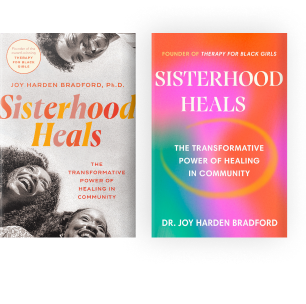Authors: Amber Flanigan LISW-CP, MPH, CHES | Chimère G. Holmes, M.A., M.S.Ed, LPC | Dr. Stacia’ Alexander, LPC-S
Historically, African cultures considered hair and hairstyling to be spiritual practices. Guyanese cultures believed that the person who styled your hair had the power to perform Obeah or witchcraft. Therefore it was important to choose a stylist carefully. Our hair’s natural tendency to grow up and out was celebrated as proximity to the heavens. The Yoruba Orisha, Oshun, was known for her divine hair braiding ability and coral beaded comb. Yoruba and cultures in Sierra Leone associated beauty and health with cleanliness. Therefore women often wore elaborate braided hairstyles with neat parts. Women who could create hairstyles were held in high regard like Oshun.
According to Orlando Patterson, a Sociologist at Harvard, White colonizers once marveled at the beautiful and intricate styling of African hair when they first arrived on the continent of Africa. But, unfortunately, this beauty was twisted into a tool to determine inferiority and degenerate status in pursuit of domination.
As a result, internalized hair texture stigma continues to exist in post-colonial society. Historians Ayana Byrd and Lori Tharps report that historically, Black churches have been known to not only use the paper bag skin test but also subject prospective members to comb tests to determine if a person’s hair was straight enough for membership. Presently many Black women are subjected to terms like “good hair,” and most navigate a capitalist society that prioritizes straight hairstyles and textures consistent with Eurocentric beauty standards.
Radical Hair Love
What can we do to combat the problems presented by texturism?
Examine your Core Beliefs
This concept comes from Cognitive Behavioral Theory (CBT) and is used to help unlock unhelpful thinking patterns. For example, when it comes to your natural hair texture, what do you tell yourself about it? How do you speak to yourself and others about your hair texture? What standards or role models are you using to determine the beauty and worth of your hair texture?
Asking yourself these questions can help you determine your core beliefs about your hair support and hinder radical self-love regarding our hair textures. For example, our history celebrates the beauty and versatility of black hair. Do your core beliefs do the same? Have your core beliefs been impacted by internalized stigma?
Evaluate your Hair Care Behaviors
Another concept from CBT, evaluating our hair care behaviors, can help us understand why we choose to care for our hair or wear our hair the way we do. For example, do you enjoy caring for your own hair? Do you use hairstyling as a means to protect your hair or to tame your hair? Do you choose hairstyles for convenience or acceptance? Do you pick hairstyles that make you feel most beautiful or hairstyles others have told you are beautiful? Do you select styles passed on past affirming or non-affirming experiences?
Celebrate Each Other
Internalized Hair Texture Stigma can also manifest in the way that we talk to each other. It is important that we celebrate our sister’s hair texture and not participate in discourse that further promotes white supremacy and demeans black women. If you have engaged in a joke or used terms like Good Hair or Bad Hair, do not hesitate to apologize to those you may have hurt. Be receptive to hearing out the perspective of others who feel hurt by words or jokes from you or your peers. Consider holding others accountable with grace for the way that they speak about black hair.
The Future is Bright
In the 70’s we witnessed African Americans begin to embrace their natural hair textures. Afros were prominent and seen as beautiful. Unfortunately, they were also seen as a political statement in the wake of the black power movement. It seems that this celebration of natural hair textures fizzled shortly after the black power movement. The good news is that natural hair began to return to prominence in the early 2000s. Since then, many natural hair care resources have come into existence as more and more black women celebrate the natural texture and versatility of their natural hair texture.
This is evidenced by the introduction of the CROWN Act in 2019. The CROWN Act was created in 2019 by Dove and the CROWN Coalition to ensure protection against discrimination based on race-based hairstyles by extending statutory protection to hair texture and protective styles such as braids, locks, twists, and knots in the workplace and public schools. CROWN stands for Creating a Respectful and Open World for Natural Hair. At the time that this post was written, The Crown Act was considered law in 12 States.
Legislation like the CROWN Act, backed by influential beauty companies like Dove, helps to dismantle texturism by legally protecting black women and promoting a message that natural hair is beautiful.
Resources
The Tangled History of Black Hair Culture – Twisted
Social Media
There are countless products, communities like Therapy for Black Girls, bloggers, and vloggers that discuss all-natural hair types, styling, and care available online and on platforms like Instagram and Youtube. Google searches are an effective way to explore these resources as well as hashtags.
References
Dabiri, E. (2020). Twisted: The tangled history of black hair culture. Harper Perennial.
Randle, B. (2015). I Am Not My Hair: African American Women and Their Struggles with Embracing Natural Hair! Race, Gender & Class,22(1-2), 114-121. Retrieved June 11, 2021, from https://www.jstor.org/stable/26505328








